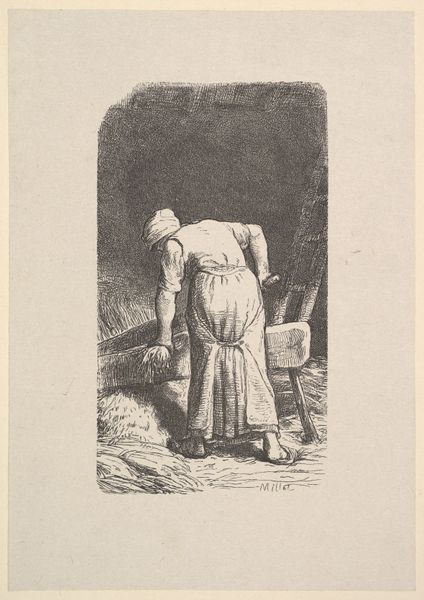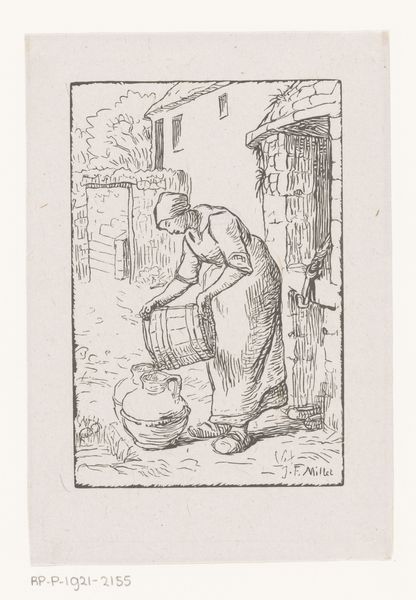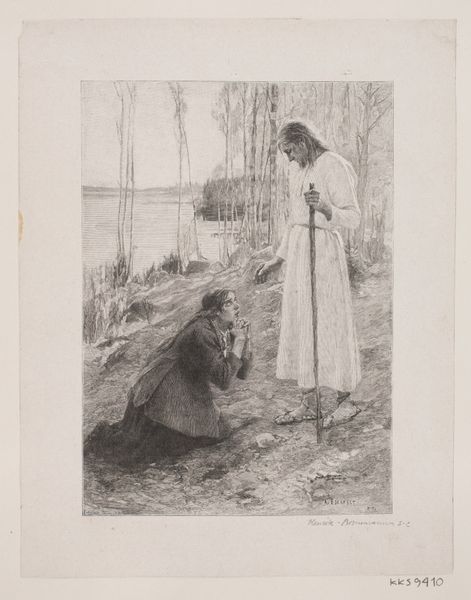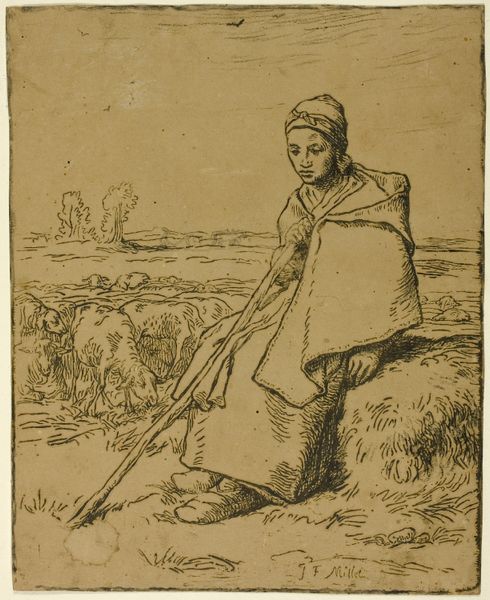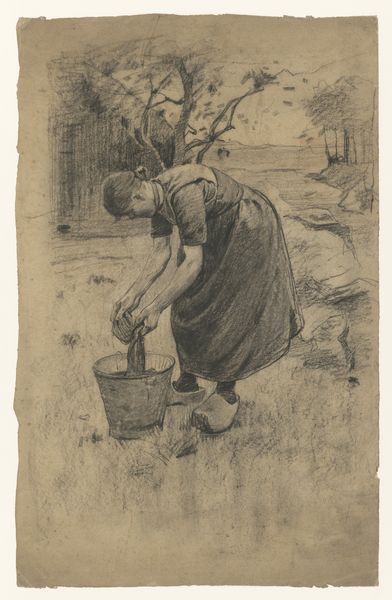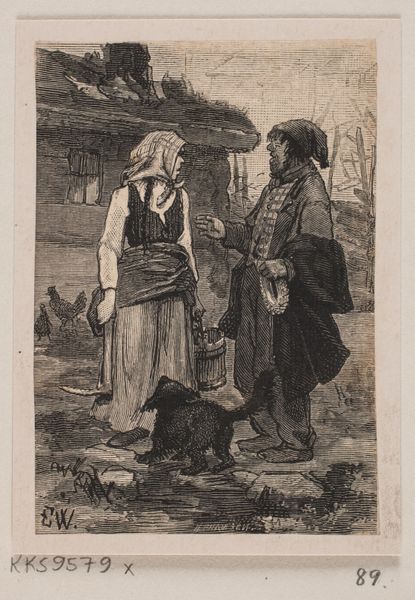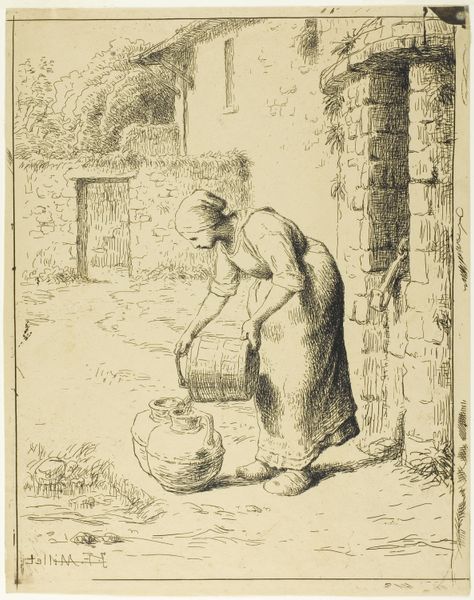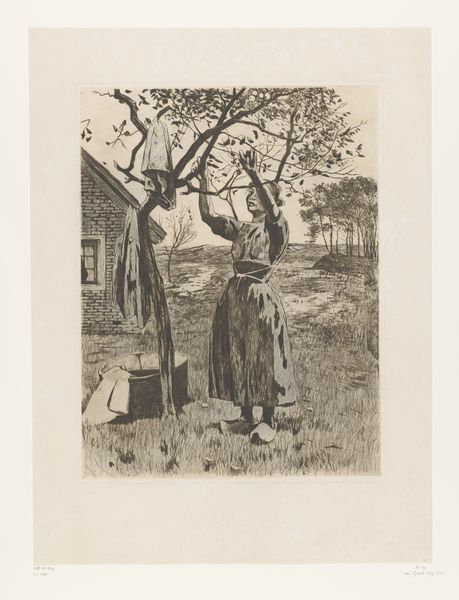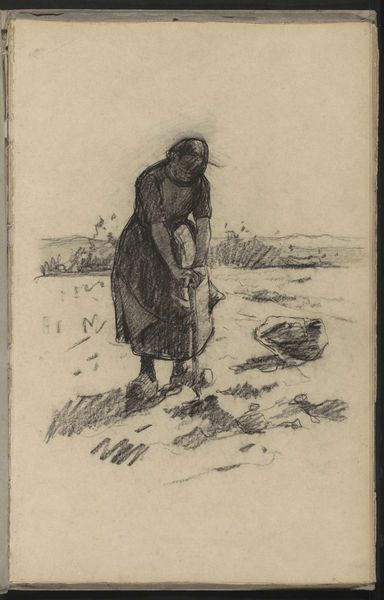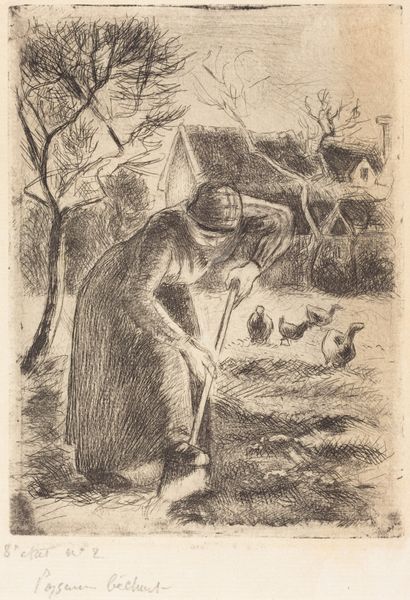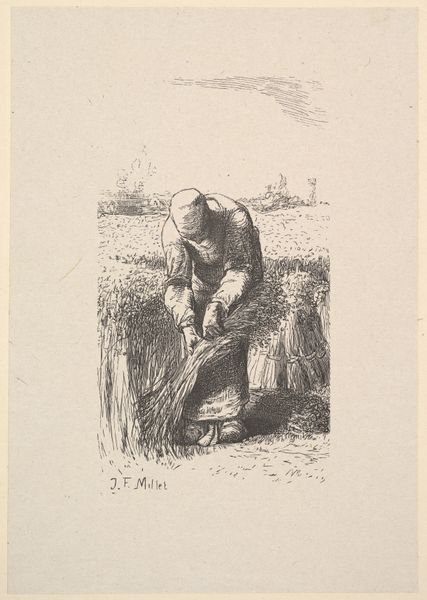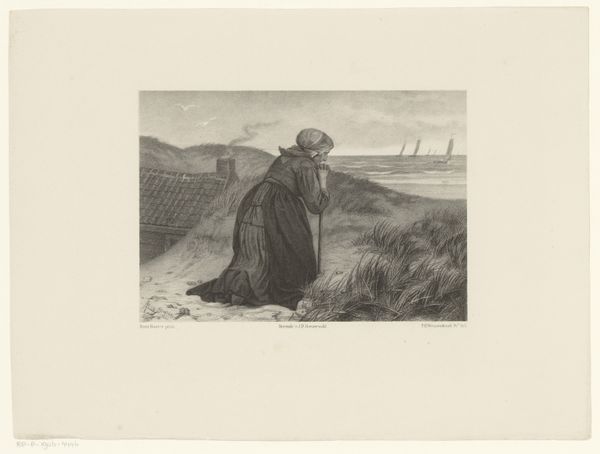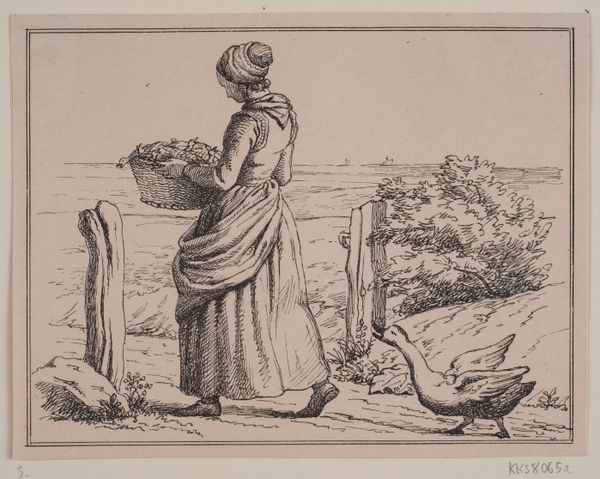
print, etching
#
narrative-art
# print
#
etching
#
landscape
#
figuration
Dimensions: 109 mm (height) x 103 mm (width) (billedmaal)
Editor: Here we have Waldemar Böhme’s etching, "Illustration til 'Kjærringen og fisken'," dating from 1883 to 1887. I’m struck by the woman's pose—it’s one of anguish, maybe? What's your take? Curator: Indeed. The raw emotion captured through the stark etching resonates deeply. It's important to consider this within the context of late 19th-century folklore illustrations. How might this image, created during a period of burgeoning social realism, speak to the lived experiences of women, particularly those in rural communities, facing hardship? Do you see connections between the woman's vulnerability and larger societal power structures? Editor: I hadn’t really thought about it in those terms. I was just seeing…sadness. But, yeah, I see the woman looks burdened, almost pleading. The overturned buckets add to the sense of loss, I guess. Curator: Precisely. And consider the source material – a fairytale, traditionally a space for female agency, subverted in this context to display female powerlessness. What does that say about the social expectations of women at the time, particularly within a patriarchal framework? Is the “Kjærringen" or old woman an object of pity or scorn, or both, within the culture of the time? Editor: So you're suggesting it is about social commentary more than pure illustration? The artist makes it so evident that this woman's despair is tied to a much broader socio-political reality. Curator: Absolutely. The illustration becomes a visual indictment, subtly critiquing the limited agency afforded to women, particularly older women, within that societal structure. It asks us to reflect on their economic vulnerabilities, their emotional burdens, and the stories that both reflected and shaped their experiences. Editor: I’ll definitely look at etchings differently now, it’s much deeper than simple storytelling. Curator: Agreed, considering context opens us to complex social and political realities.
Comments
No comments
Be the first to comment and join the conversation on the ultimate creative platform.
